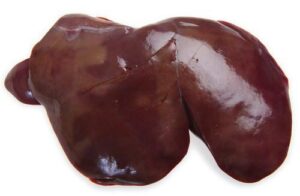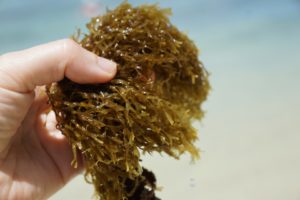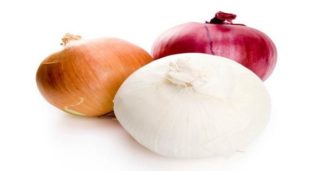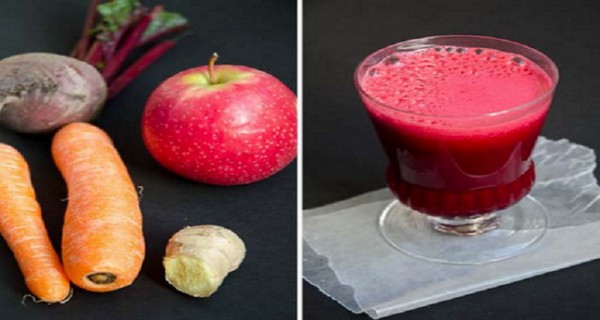Ad Blocker Detected
Our website is made possible by displaying online advertisements to our visitors. Please consider supporting us by disabling your ad blocker.
If you have gout, a common and painful form of arthritis, there’s a good chance you’ve been told to avoid eating purines in your diet. But what exactly are purines — and does avoiding them actually help manage gout symptoms?
What Causes Gout?
To understand how purines can impact a person with gout, it first helps to understand how gout occurs. Gout develops when uric acid builds up in your body. “Excess levels of uric acid, or hyperuricemia, appear to be the main cause of gout,” says Sophia Kamveris, MS, RD, LDN, a Boston-based nutritionist and author of the 28-Day Gout Diet Plan.
Typically uric acid dissolves in your blood, your kidneys filter it out and then flush it from the body through the urine. When this process doesn’t work, that extra uric acid can accumulate in joints to form sharp crystals, which can create extreme discomfort in the joints and also cause kidney stones.
How Do Purines Play a Role in Gout?
Purines are compounds found in certain foods. When you eat foods that contain purines, your body breaks them down into uric acid. So it makes sense that a low-purine diet has long been recommended as a defense against gout attacks.
Uric acid that comes from high-purine foods, however, only makes up about 15 percent of the uric acid in your body. The rest is found naturally in your body’s tissues, and your genes play a big role in determining how much uric acid your body creates. It’s extremely unlikely, say experts, to manage gout strictly through diet changes — that’s why medication is crucial.
What you eat, however, can often help tip the odds in your favor.
“When a patient has a good diet it can definitely help decrease their risk for gout flares, ”says Randall N. Beyl Jr., MD, a rheumatologist in Albertville, Alabama. And while researchers continue to explore the best diet for those with gout, purines remain of interest.
People with gout who ate a high-purine diet were about five times as likely to have a gout attack as people who ate the lowest-purine diet, according to a study of more than 600 people with gout from Boston University published in the journal Annals of the Rheumatic Disease. Purine intake was linked with more gout attacks regardless of people’s alcohol intake or which medications they took.
If your doctor recommends you follow a low-purine diet to help manage your gout, these are some of the high-purine foods you should stay away from.
High-Purine Foods to Avoid with Gout
1. Liver

If you have gout, dishes like chopped liver and liver and onions are the best avoiding, along with other organ meats like kidney, heart, sweetbread, and tripe, since they’re high in purines.
Instead: Other meats like poultry and beef contain fewer purines, so you can safely eat them in moderation. You can also try a vegetarian pate recipe made from mushrooms and walnuts that simulates the flavor of the liver but is made with ingredients that don’t seem to aggravate gout symptoms in the same way.
2. Soft Drinks

The sugar fructose in soft drinks is not high in purines itself; however, your body breaks it down to form purines. Drinking sodas made with high-fructose corn syrup has been linked with an increased risk of gout; men who drank two or more servings of sodas per day had an 85 percent higher risk of gout than those who had less than one per month in a study from the journal BMJ.
Instead: Diet sodas do not seem to be connected with gout in the same way and can help you transition off the sugary stuff. It’s not a good idea for your health generally to drink diet soda in abundance either. Try water flavored with lemon and lime slices, or unsweetened seltzer in yummy flavors like passion fruit and vanilla.
3. Seafood

Certain types of seafood — anchovies, mussels, crab, shrimp, sardines, herring, trout, mackerel, and more — have moderate to high levels of purines. Men who ate the most seafood were more than 50 percent more likely to have high levels of uric acid compared with those who ate the least, in a study from Vanderbilt University Medical Center in Nashville.
Instead: Since fish is a heart-healthy food, it makes sense to keep it in your diet. One option is to try fish like sole and cod that are lower in purines. You can also experiment with smaller servings of higher-purine fish — around the size of your palm — balanced out with a big serving of vegetables like sautéed zucchini or broccoli and a generous squeeze of lemon, since lemon juice may help to neutralize uric acid.
[adinserter block=”5″]

